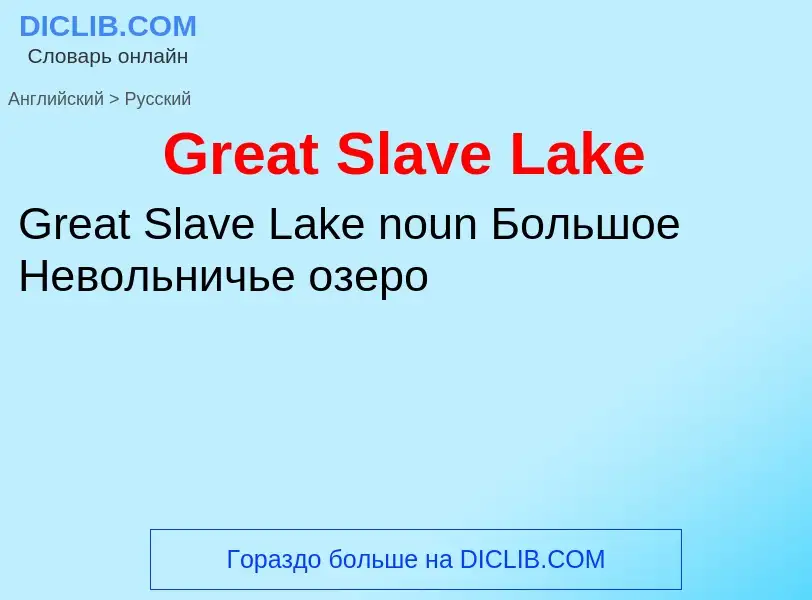Translation and analysis of words by ChatGPT artificial intelligence
On this page you can get a detailed analysis of a word or phrase, produced by the best artificial intelligence technology to date:
- how the word is used
- frequency of use
- it is used more often in oral or written speech
- word translation options
- usage examples (several phrases with translation)
- etymology
Great Slave Lake - translation to English
['greit'sleiv'leik]
география
Большое Невольничье озеро
существительное
общая лексика
Большое Невольничье озеро
['lesə'sleiv'leik]
география
Малое Невольничье озеро
Definition
Wikipedia

Great Slave Lake (French: Grand lac des Esclaves), known traditionally as Tıdeè in Tłı̨chǫ Yatıì (Dogrib), Tinde’e in Wıìlıìdeh Yatii / Tetsǫ́t’ıné Yatıé (Dogrib / Chipewyan), Tu Nedhé in Dëne Sųłıné Yatıé (Chipewyan), and Tucho in Dehcho Dene Zhatıé (Slavey), is the second-largest lake in the Northwest Territories of Canada (after Great Bear Lake), the deepest lake in North America at 614 m (2,014 ft), and the tenth-largest lake in the world by area. It is 469 km (291 mi) long and 20 to 203 km (12 to 126 mi) wide. It covers an area of 27,200 km2 (10,500 sq mi) in the southern part of the territory. Its given volume ranges from 1,070 km3 (260 cu mi) to 1,580 km3 (380 cu mi) and up to 2,088 km3 (501 cu mi) making it the 10th or 12th largest by volume.
The lake shares its name with the First Nations peoples of the Dene family called Slavey by their enemies the Cree. Towns situated on the lake include (clockwise from east) Łutselk'e, Fort Resolution, Hay River, Hay River Reserve, Behchokǫ̀, Yellowknife, Ndilǫ, and Dettah. The only community in the East Arm is Łutselk'e, a hamlet of about 350 people, largely Chipewyan Indigenous peoples of the Dene Nation, and the abandoned winter camp and Hudson's Bay Company post Fort Reliance. Along the south shore, east of Hay River is the abandoned Pine Point Mine and the company town of Pine Point.






